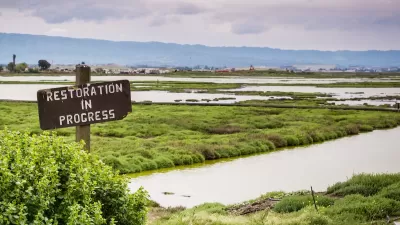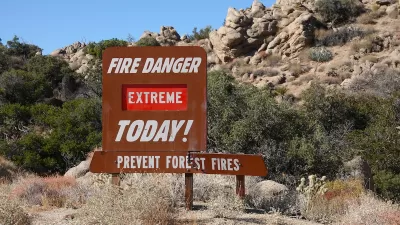The Coal+Ice exhibition was on view in San Francisco in September 2018, timed to leverage Governor Jerry Brown’s Global Climate Action Summit.
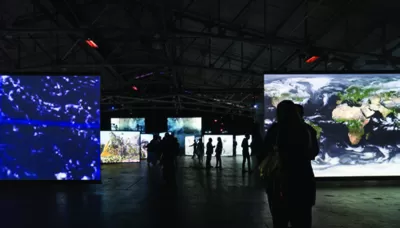
It wasn't that long ago that An Inconvenient Truth sparked a collective passion for climate action that almost seemed like it could maybe save the world.
The film's sequel, An Inconvenient Sequel: Truth to Power, was released to audiences in 2017, barely making a ripple in the public consciousness, while the United States abdicated responsibility for its environmental mess on a daily basis.
The world is now faced with several options in response to climate change. One is to follow the lead of the United States and double down on the technologies that have created these circumstances. The Trump administration clearly prefers this choice, recently publishing a report that predicts the earth's average temperature would inevitably increase by 7 degrees Fahrenheit by the year 2100, and using that prediction to justify a policy that freezes federal fuel efficiency standards for cars and light trucks built after 2020.
The massive Coal+Ice exhibition at the Fort Mason Center for Arts and Culture in San Francisco experiments with another option: inspiring climate action. Art, namely photography, is the medium for that inspiration. Co-curators Susan Meisales and Jeroen de Vries collected photos and videos from over 40 artists to build a narrative of climate change stretching from the coal industry (an obvious proxy for all forms of fossil fuels) to the environment to the lives of human beings.
The exhibition builds on the success in the visual medium achieved by films like An Inconvenient Truth, but also pushes the narratives of climate change into a more artistic form, requiring more of the viewer, perhaps, but with an even greater potential to inspire collective action. The exhibition's successes toward that goal are found in its confrontational performance and the inextricably human role in every aspect of the story.
The entrance of the exhibition space featured historic photos of coal miners from around the world—the United States, Belgium, China, and Wales—blending the long history of coal mining to reveal the similarities in conditions for the worker across time and space.
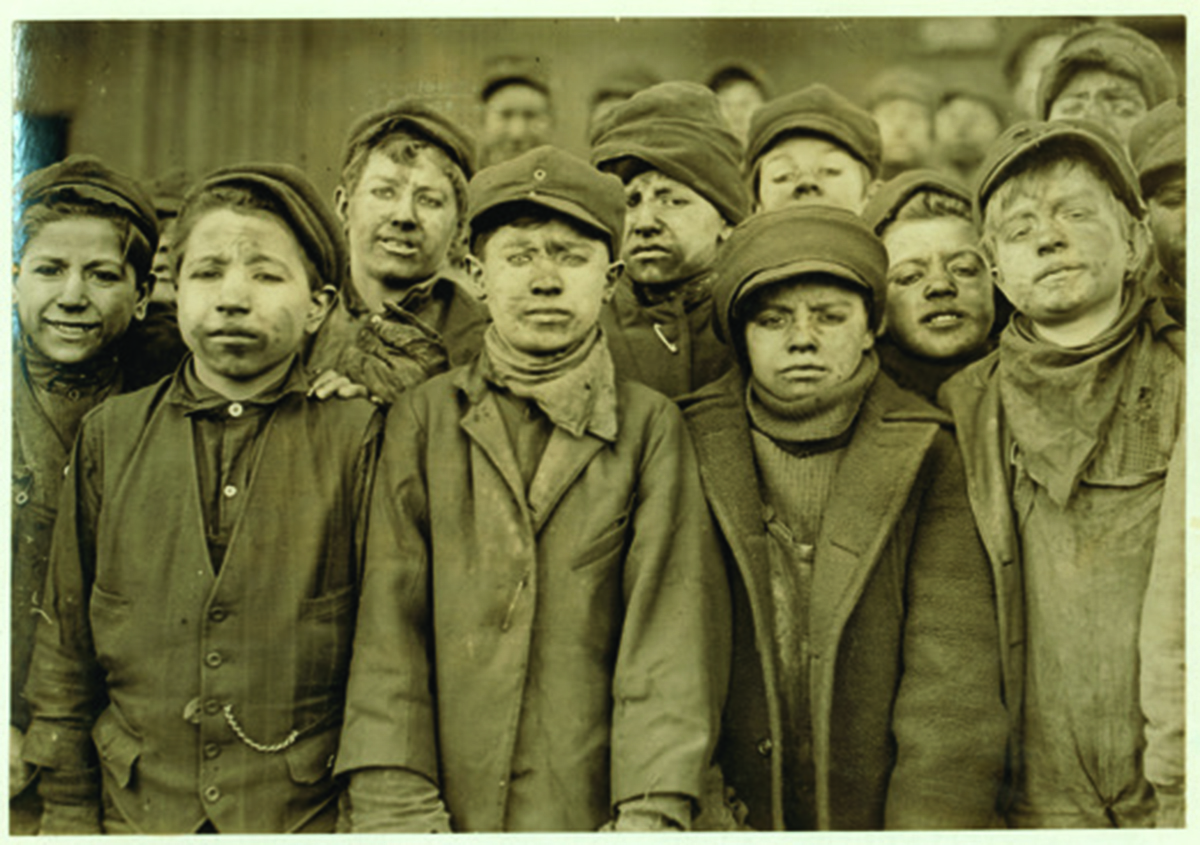
Deeper into the exhibition, images are projected onto screens arranged to create a viewing room, of sorts. The rooms did not provide refuge—labor movements in revolt, the deepest interiors of mines, and the dark effects of mining operations are too unsettling for any kind of comfort.
The narrative moves then to the retreating ice of the highest mountain ranges and farthest poles of the planet. In this section of the exhibition, massive triptychs display dramatic environmental scenes—Mount Everest's vanishing glaciers, cell phone footage of wind and rain, and satellite images of the typhoons and hurricanes that battered the world over and over again in 2017.
The signs of climate change—wilted, blueish ice; rivers rushing through glaciers; the rock surfaces of Mount Everest exposed to the sun—are obvious even to those us who lack of experience in those hostile corners of the world. One of the more devastating confrontations of the exhibition is realizing how familiar and recognizable some of these images have already become.
The narrative concludes with the human effects of climate change. The films and images in this section of the exhibition follow people wading through waste high floodwaters to recover possessions, returning to their homes and places of work, and, shockingly, going about their daily business of washing, preparing food, resting, and socializing, seemingly at ease with the rising water. The work of South Carolina-based artist Gideon Mendel achieved almost-too-visceral an effect for me. I felt like I needed to wash the stench of the tepid floodwaters off before I left Fort Mason.
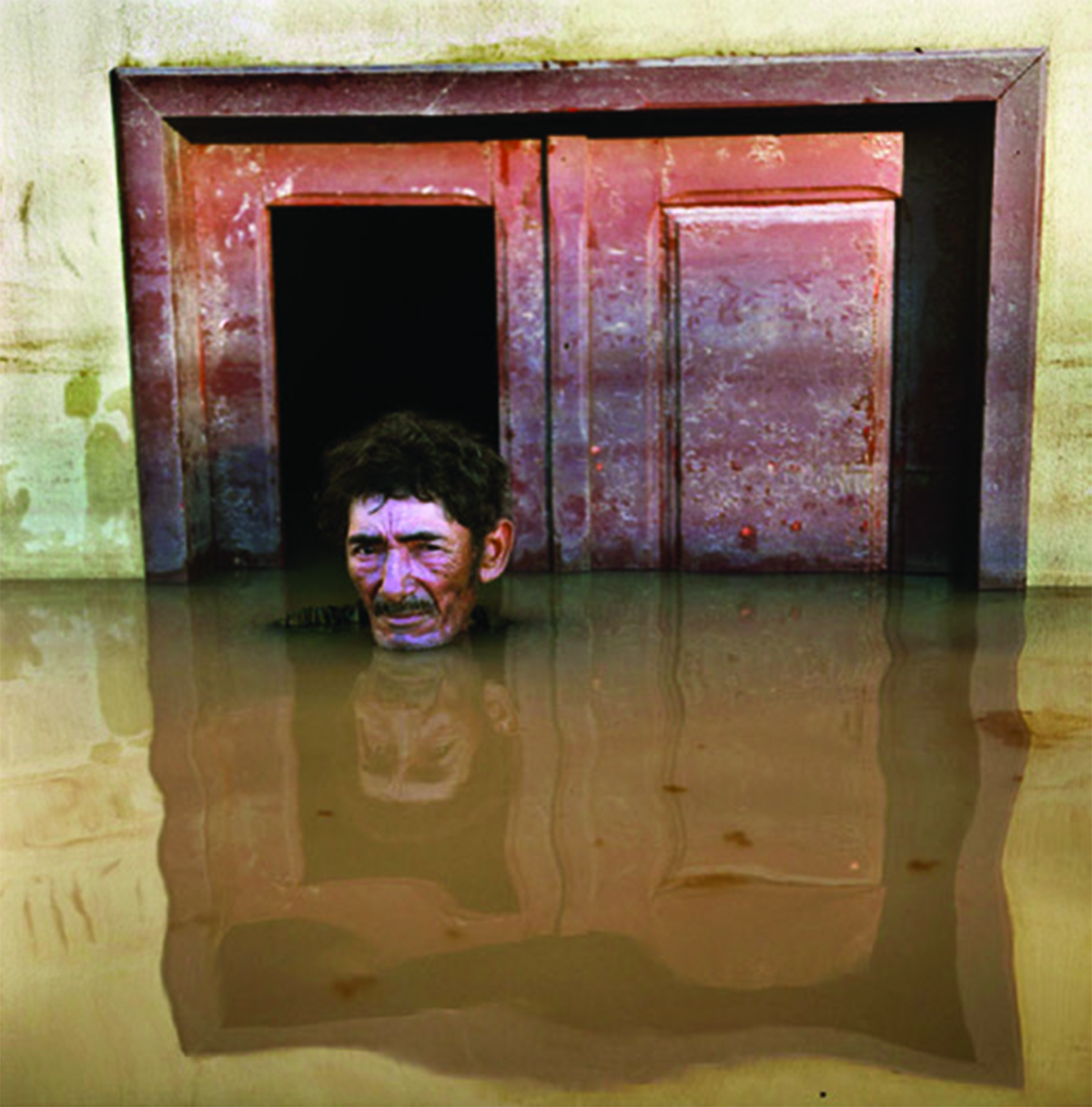
Photography and films of over 40 artists, with their lenses pointed in different directions on every continent and across the centuries, reveal the same story: humans are damaging the world and themselves.
Visitors to the exhibition stroll through the immersive environment of a blacked-out warehouse space—the massive interiors of the building so dark that illumination from the exhibition's photographs and films made silhouettes of the individuals visiting the exhibition. The effect of anonymity, and disappearing into the environment, is almost as striking as the images themselves.
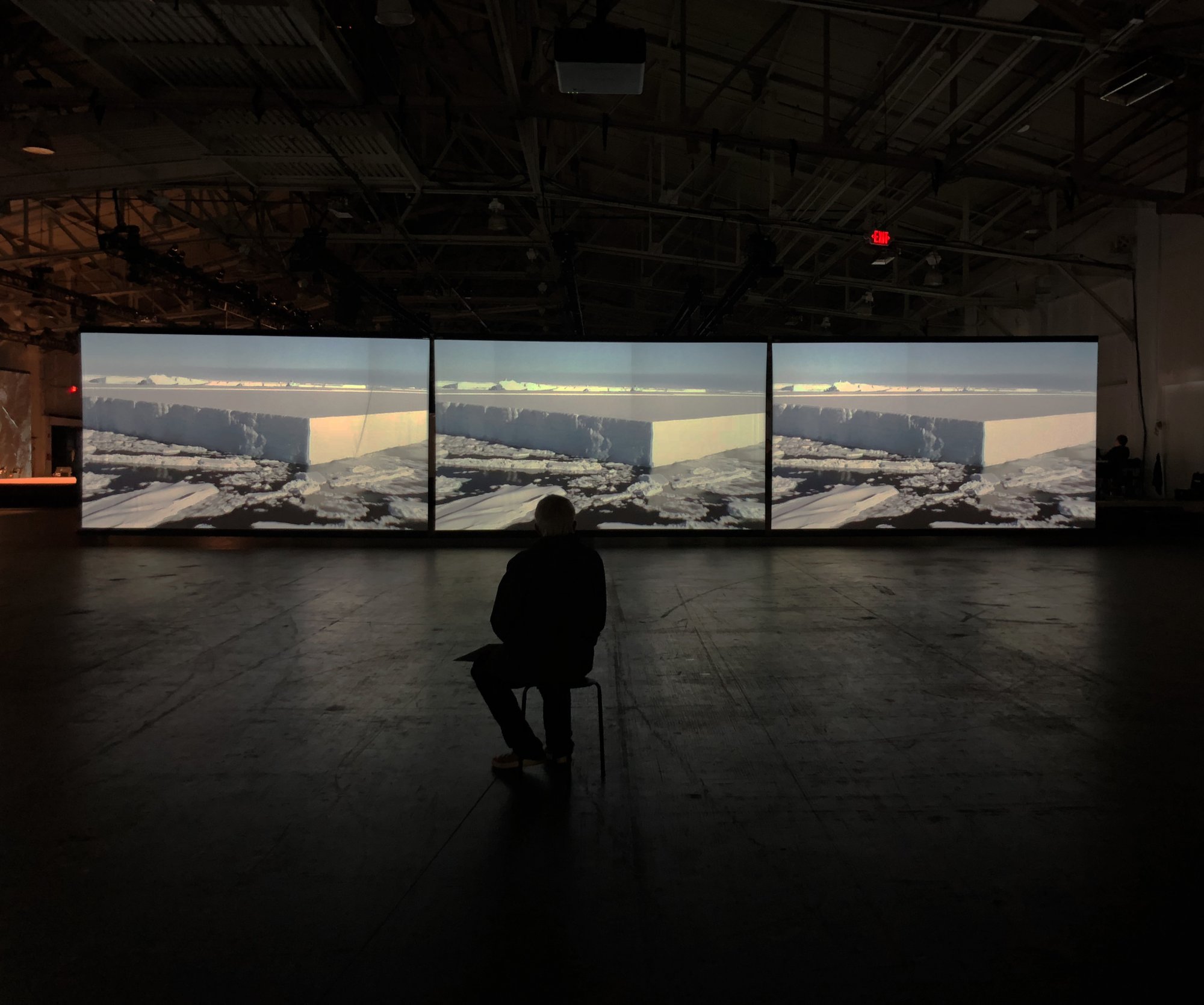
That anonymity stands in stark contrast to the deliberate positioning of the exhibition in terms of its location and timing. The exhibition coincided with the Global Climate Action Summit, which was held at the same time, in the same city. The Summit attracted politicians, past and present, celebrity environmentalists, and journalists from all over the world. California Governor Jerry Brown, Van Jones, and Al Gore visited the exhibition (Al Gore was on the premises twice, actually), for events. In addition to large crowds (total attendance for the three week run was 20,000, and the final day of the exhibition attracted 1,500 visitors), the exhibition hosted special events every evening most night it was on display.
It's too easy to consider the dignitaries and politicians at the Global Climate Action Summit the choir, and Coal+Ice the preacher. It's also far too easy to assume the exhibition would deliver its more effectively to audiences in West Virginia, or Pennsylvania, or Tennessee—settings for some of the more distressing photos and films shown in the exhibition.
California, San Francisco, and Los Angeles still have plenty to reckon for when it comes to handing the keys of the planet to oil and car companies. All Americans, even the supposedly enlightened voters supporting some of the most aggressive climate action policies, must recognize and account for their role in perpetuating climate change. California, for instance, still is still covered in oil production facilities. San Francisco is the epicenter of a massive demographic shift, leaving low-income and minority populations to drive farther to reach jobs and services. Los Angeles is removing bike lanes while riders flee its transit systems.
The organizers of Coal+Ice have just begun discussing the possibility of bringing the exhibition to other cities, so your chance to see the exhibition hasn't permanently expired. Your chance to amplify the message and to get to work—to experiment with new ways of communicating the crisis of climate change, to inspire action, and to hold our country and its people accountable—starts right now.

Maui's Vacation Rental Debate Turns Ugly
Verbal attacks, misinformation campaigns and fistfights plague a high-stakes debate to convert thousands of vacation rentals into long-term housing.

Planetizen Federal Action Tracker
A weekly monitor of how Trump’s orders and actions are impacting planners and planning in America.

San Francisco Suspends Traffic Calming Amidst Record Deaths
Citing “a challenging fiscal landscape,” the city will cease the program on the heels of 42 traffic deaths, including 24 pedestrians.

Defunct Pittsburgh Power Plant to Become Residential Tower
A decommissioned steam heat plant will be redeveloped into almost 100 affordable housing units.

Trump Prompts Restructuring of Transportation Research Board in “Unprecedented Overreach”
The TRB has eliminated more than half of its committees including those focused on climate, equity, and cities.

Amtrak Rolls Out New Orleans to Alabama “Mardi Gras” Train
The new service will operate morning and evening departures between Mobile and New Orleans.
Urban Design for Planners 1: Software Tools
This six-course series explores essential urban design concepts using open source software and equips planners with the tools they need to participate fully in the urban design process.
Planning for Universal Design
Learn the tools for implementing Universal Design in planning regulations.
Heyer Gruel & Associates PA
JM Goldson LLC
Custer County Colorado
City of Camden Redevelopment Agency
City of Astoria
Transportation Research & Education Center (TREC) at Portland State University
Jefferson Parish Government
Camden Redevelopment Agency
City of Claremont


























